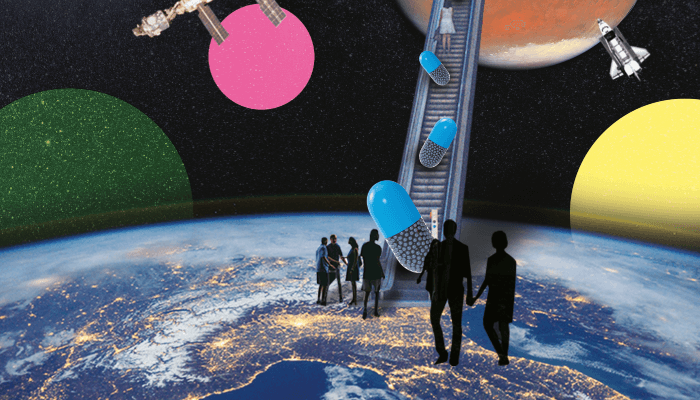The altered environment of spaceflight causes changes in many biological processes that have evolved to function in the 1G, radiation-free, temperate, saline environment of Earth. The immediate change to the body is caused by the environment of microgravity, where astronauts are in constant freefall as they orbit the globe. This environment causes redistribution of fluids in the body, in particular the blood, which is no longer pulled towards the feet and away from the head. The body compensates for this unnatural pooling in the upper half of the body by then reducing the volume of the blood. These changes in fluid distribution and blood volume all cause immediate changes to pharmacokinetics/pharmacodynamics (PK/PD). Studies on the SpaceLab (the laboratory that flew in the bay of the Space Shuttle), for example, have shown that the rate of absorption (measured in saliva) of paracetamol and scopolamine/dexedrine from tablets were double after one day of space flight, and almost halved after two. Longer term changes caused by microgravity include muscle atrophy, insulin receptor desensitization (astronauts can be clinically diabetic after 30 days of spaceflight), retinopathy, and decalcification of bone (and the consequent deposition of calcium elsewhere, often as kidney stones).
It has also been shown that stem cells change in microgravity. They tend to remain undifferentiated in flight, but they differentiate on return to Earth along one lineage far quicker than normal. Bacteria are also shown to behave differently. Whether due to changes in the mechanics of membranes evident in parabolic flight or cell surface receptor recruitment or other factors, bacteria have been shown to be more resistant to antibiotics and, for other reasons, antibiotics are also less effective.
With changes to bacteria, there are also changes to the gut microbiome. Enzyme activity has been shown to be affected, meaning that food and medicines are absorbed and processed differently during spaceflight. With the now-known link between the gut and the brain, and the link between the state of the microbiome and mental health, there are many interlinked and complex issues that need to be researched and understood when it comes to long-term spaceflight. And issues around mental health will only be compounded by the obvious pressures of confinement, social isolation, stress, and changes in circadian rhythm.

All of these issues, and more, come to the fore when considering a mission to Mars. Such a mission, described by NASA’s Design Reference Architecture 5.0, on which Andrew Weir wrote the book ‘The Martian,’ would be around three years with a crew of six. It has been estimated that the chance of serious illness or death in an activity such as spaceflight is 0.06 per-man-per-year. The chance of such an incident in one of six crew in their three-year mission to Mars is 67 percent. There is a 20 percent chance that half the crew will suffer. We must find a way to treat these explorers if such a mission is to take place. They cannot take every medicine with them on the journey.
Bringing things closer to home, the often dramatic and largely unpredictable rapid changes to PK/PD on spaceflight could produce real and current problems in the area of space tourism. For paracetamol, a doubling of the rate of absorption and maximum plasma concentration after a few hours of flight is not a huge problem. But if the astronaut took a drug with a narrow therapeutic window, then such a change could be fatal. Until now, astronauts are selected based on their physical and mental fitness (and on the payroll of national governments). But with the advent of space tourism, where the financial drivers and considerations differ, the considerations of medication become greater. Who will license? Who will authorize? Who will prescribe? Who will provide the medical information for space medication? This area – although not covered in this feature – is something that my colleague, Li Shean Toh, at the University of Nottingham, is developing.




